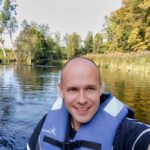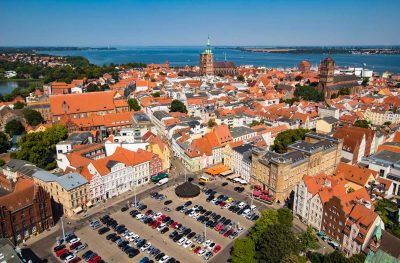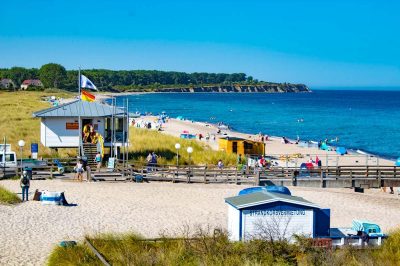Germany’s largest island is one of the country’s most popular destinations. Kilometres of sandy beaches, spas dating back to the imperial era, the famous chalk cliffs and, above all, plenty of peace and relaxation attract around one and a half million guests to Rügen island every year. In the following article, we would like to introduce you to the most beautiful Rügen sights and give you a few tips for your next visit to Rügen. The most important Rügen sights are located on the east coast of the island, but a trip into the island’s interior is also worthwhile, as is a trip to Rügen’s little sister, the picturesque neighbouring island of Hiddensee.
These are the most beautiful sights on Rügen island
Cape Arkona
Few places in Germany have been sung about, described in poems or otherwise captured the imagination of artists as often as the northernmost point of the island: Cape Arkona. Here you can feel that the Baltic Sea is a real sea. The view can stretch for kilometres into the distance. On the Wittow Peninsula, the chalk and sediment coastline drops a full 43 metres into the sea. But it is not only nature that is breathtaking here. There are also several man-made places to discover. There are two lighthouses in the immediate vicinity of each other, one of which you can climb.
The strategically favourable location was also important for the military. When the island was still inhabited mainly by Slavs in the Middle Ages, Prince Jaromar built a castle here, the remains of which are currently being excavated by archaeologists. The Wehrmacht and later the NVA (army of the GDR) built bunkers here, which you can visit. Tip: The most beautiful view of the cape can be enjoyed from the small harbour town of Vitt south of the cape.
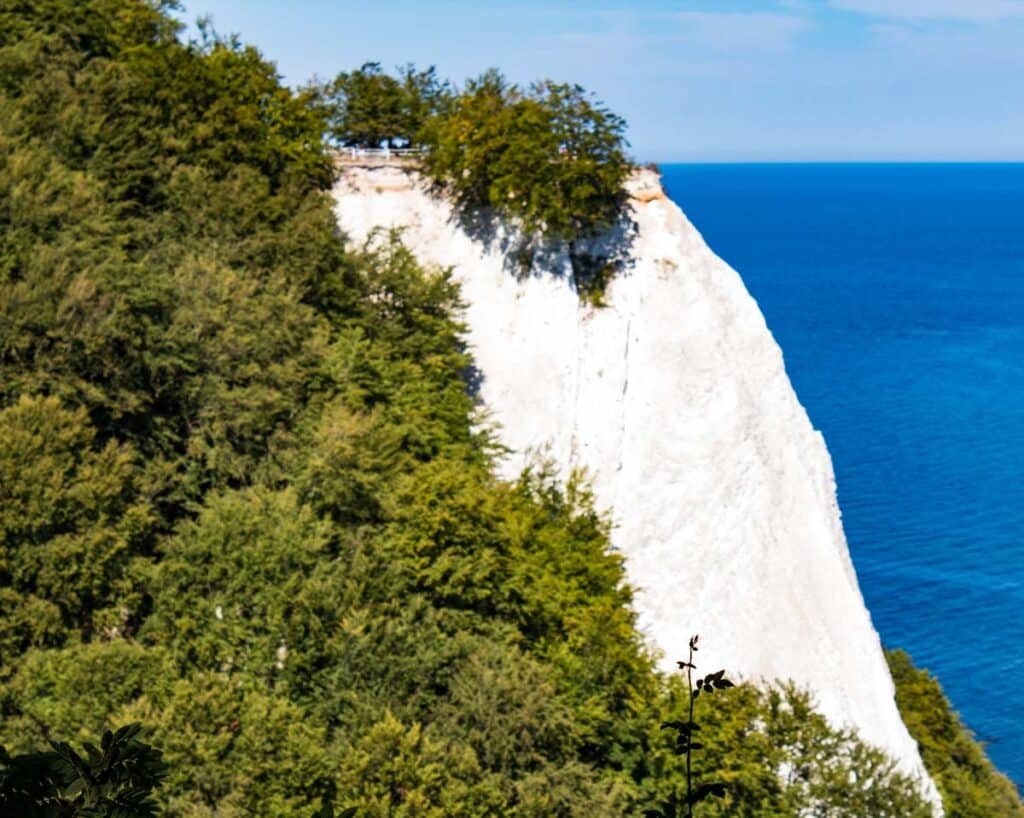
Chalk cliffs
At the latest since the German painter Caspar David Friedrich incorporated the chalk cliffs into his paintings and used them several times as a source of inspiration, the chalk cliffs of Rügen have become a German place of longing. They are the island’s landmark. It is the colour combination of the blue sea, the brilliant white of the rocks and the green forests that grow right up to the cliffs that make them so special.
The most prominent point on the chalk cliff coast of Rügen is the so-called Königsstuhl in the Jasmund National Park. The easiest way to see the 118-metre-high rock is from the National Park Centre, or you can use the Viktoriasicht viewpoint, which is accessible free of charge, and from where you can also hike to the Königsstuhl. Alternatively (and even more beautiful) is a view of the Königsstuhl from a boat. Numerous operators offer tours along the chalk cliffs from several places on Rügen.
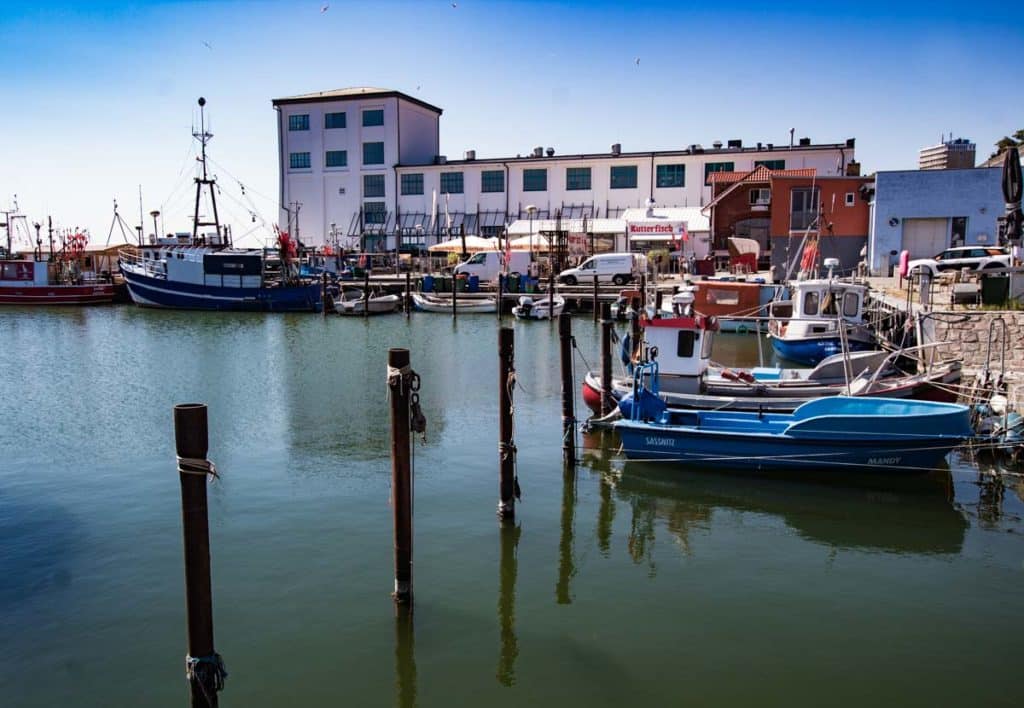
Sassnitz
In the 1900s, Sassnitz was one of the most popular Baltic Sea resorts and had a beautiful sandy beach with a sea promenade. A storm tide swept away the sand. Today, only rocks can be seen here. Rügen’s second-largest town is still worth a visit, however, because numerous magnificent villas have survived from the imperial era. Sassnitz is also home to the island’s most important harbour. Here you can not only book a boat trip to the chalk cliffs, but also buy the island’s best fish sandwiches with fresh fish. The Rügen Fisch production facility is also located at the harbour. In the adjoining factory outlet, you can stock up on all kinds of canned fish and take home one or two delicacies from the coast.
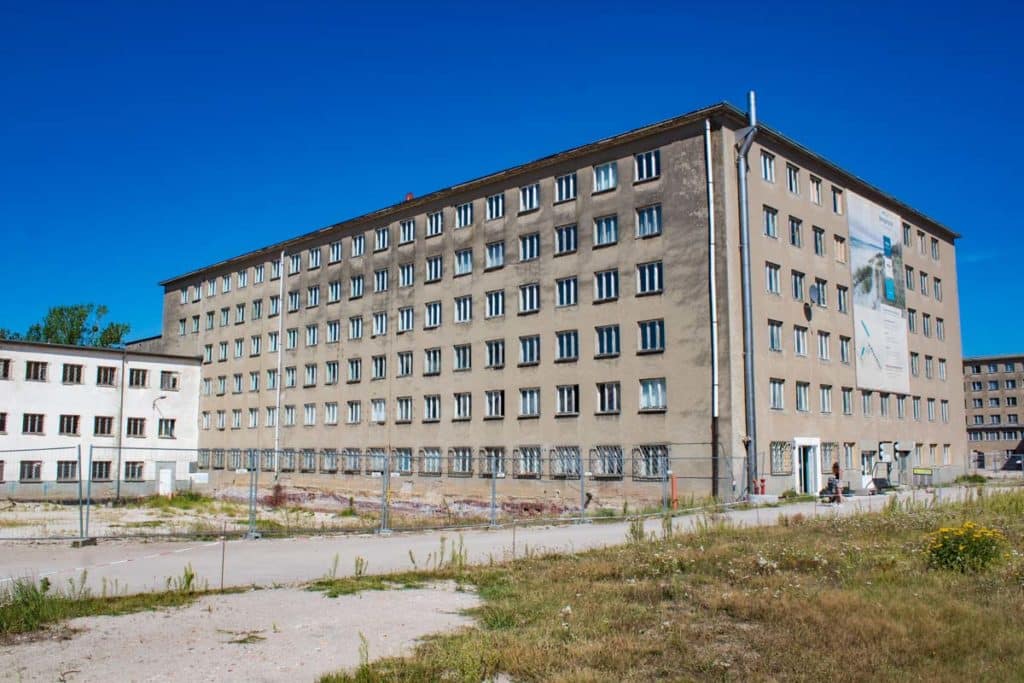
Prora
Prora was a sleepy little village until the 1930s. Then the Nazis had the crazy idea of building a gigantic holiday complex here. Once completed, up to 20,000 people were to spend their holidays in this complex run by the Nazi holiday organisation “Kraft durch Freude” (Power through joy). The complex was to be 4.5 kilometres long, but the Second World War prevented its completion. Over time, the houses fell into disrepair. In the meantime, however, they have been sold and most of them have been converted into luxury flats. You can still get an impression of the old architecture, but the grey blocks are increasingly giving way to modern and expensive residential quarters. So it’s high time to pay a visit to this historically unique complex!
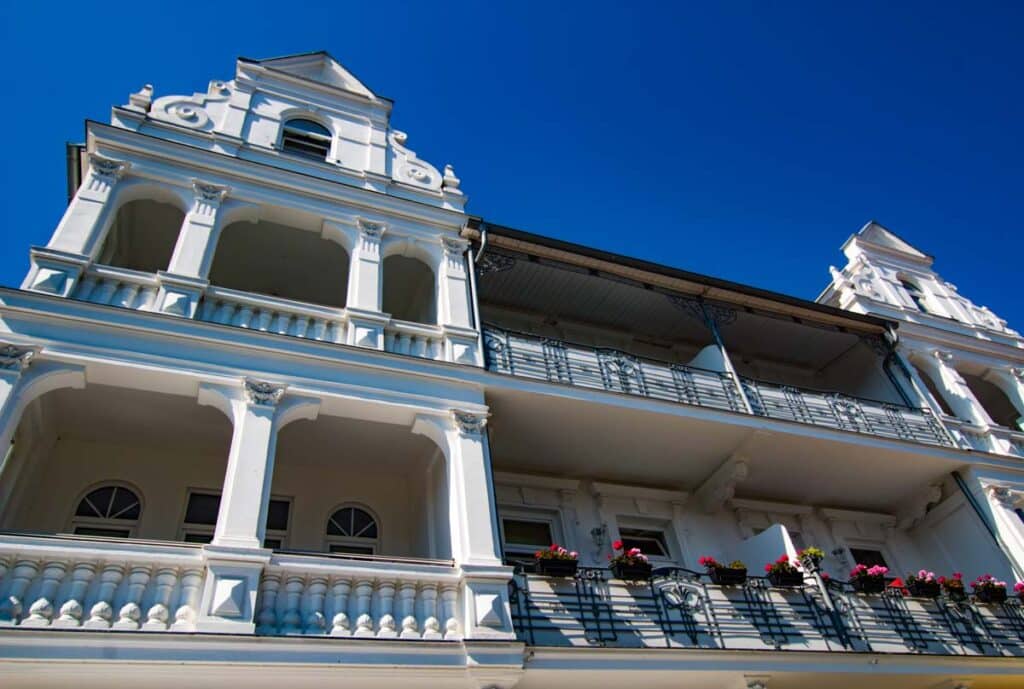
Binz
Rügen has many beautiful seaside resorts on its east coast, so the choice is not easy. But none of them comes close to Binz, the most fashionable Baltic Sea resort on Rügen island. The combination of magnificent white seaside resort architecture and fine sandy beaches has already inspired numerous writers and musicians. Of course, many know this and want to feel the magic of this place. And I too have already spent my holidays here three times, that’s how much I like Binz. But if it’s too crowded, you’ll find plenty of other places to relax in Binz.
Granitz Hunting Lodge
Even from a distance you can see the high central tower of the Granitz hunting lodge, which rises in a wooded area in the middle of the island’s interior. The castle was built in the early 19th century in the neo-Gothic style and served the lords of Putbus as a place to relax after the hunt. You can still relax here today and enjoy the most beautiful view of the island’s forests from the tower. Incidentally, the tower was designed by Karl Friedrich Schinkel, one of the most important architects of his time, who created numerous buildings, especially in Berlin. Today, the castle serves as a museum and can be visited all year round.
Putbus
The Lords of Putbus came from an old noble family from the community of the same name not far from the castle. The town is relatively young and only came into being at the beginning of the 19th century, when Prince Wilhelm Malte I had a castle built in the town, which unfortunately no longer exists today. But you could take a look at numerous other buildings and the large castle park. The prerequisite for all new buildings in Putbus was that they had to have a white façade and rose bushes in front of their houses. This also earned Putbus the nicknames “White Town” and “Rose Town”; the beauty of this cosy place is guaranteed to leave no one cold.
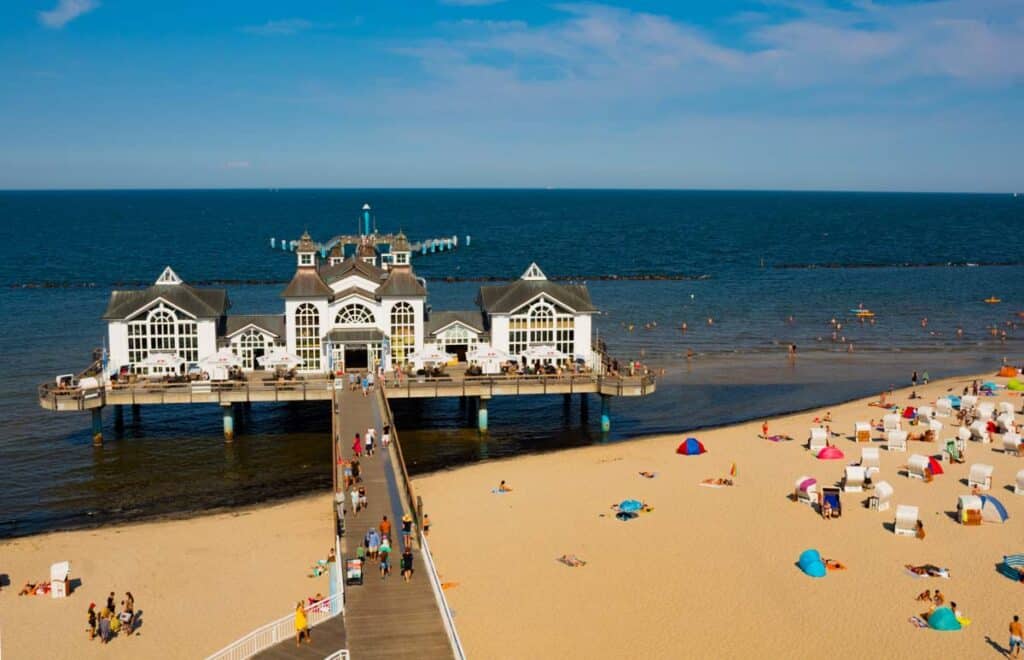
Sellin
Which is the most beautiful seaside resort on Rügen: Binz or Sellin? The choice really isn’t easy, because Sellin also has beautiful buildings from the imperial era that bear witness to the splendour and wealth of that time. But what makes Sellin truly unique is its pier. Although it is only about 30 years old, it had several predecessors that made the place so special. The pier is beautifully illuminated at night and there is a fine sandy beach on both sides, which you can reach via a funicular railway from the centre of the town, which is higher up.
Göhren
Göhren can also claim to be one of the most beautiful seaside resorts on the island. Here at Nordperd, the cape in the far east of the island, it’s much more relaxed than in Binz and Sellin, where it can get pretty crowded in the high season. Here, too, there is a pier on which you can walk a full 270 metres out to sea. Göhren is also the end point or starting point of the remaining part of the Rügen narrow-gauge railway. The “Rasender Roland” (Raging Roland), as the train is also known, now runs on the historic route again.
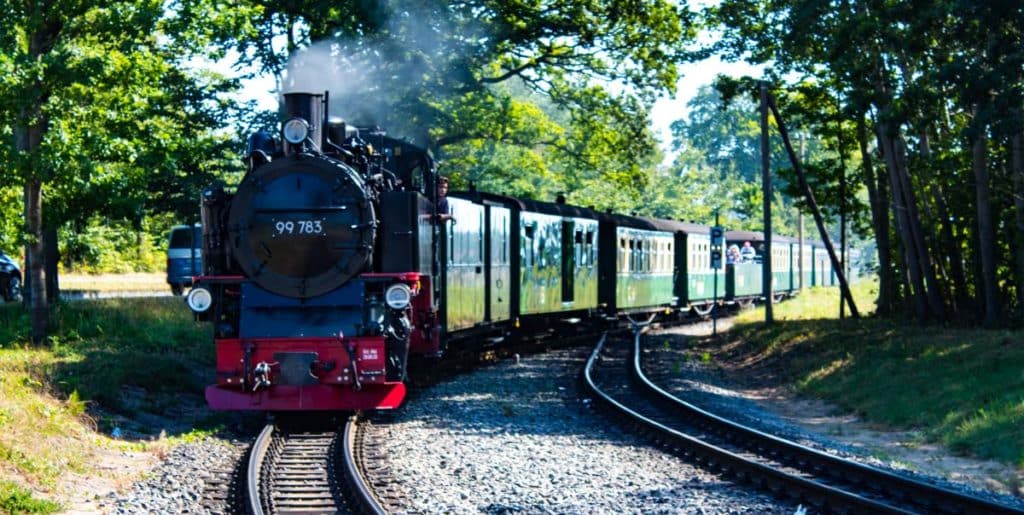
Rasender Roland
A ride on the Rasenden Roland is the most beautiful way to explore the island. The small railway runs daily on a 750 mm gauge from Putbus via Binz, Sellin and Baabe to Göhren. The historic steam locomotive makes a hell of a racket and has been reliably connecting the most important places on this part of the island at a leisurely pace every two hours or hourly, depending on the season, for over 100 years. A ride in the historic carriages is like a little trip back in time. The Rasender Roland is definitely one of the most beautiful and original Rügen sights!


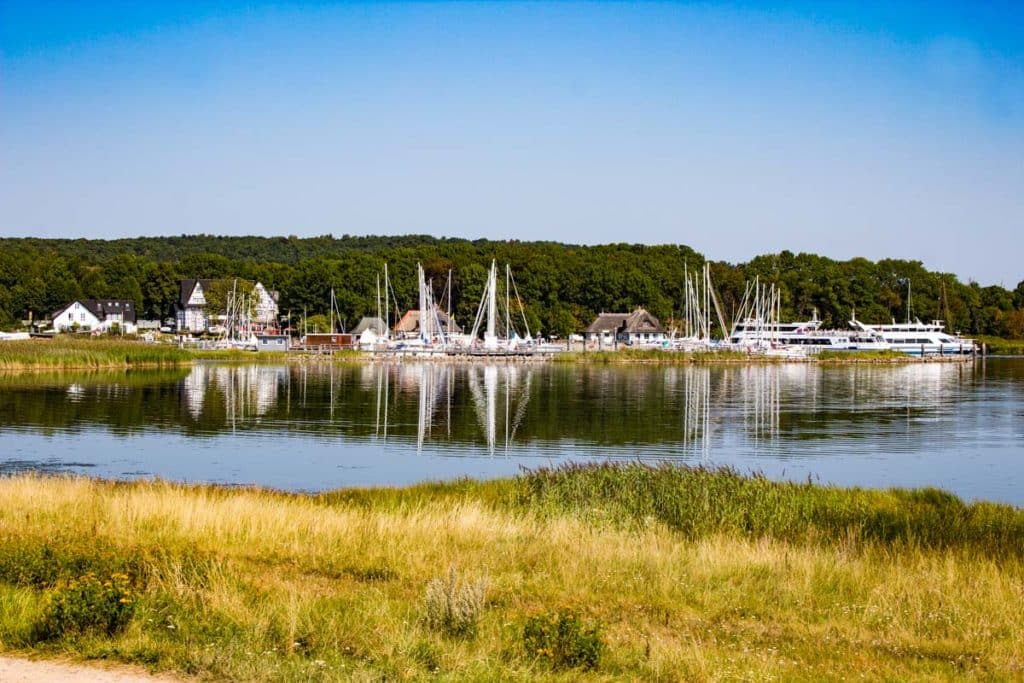
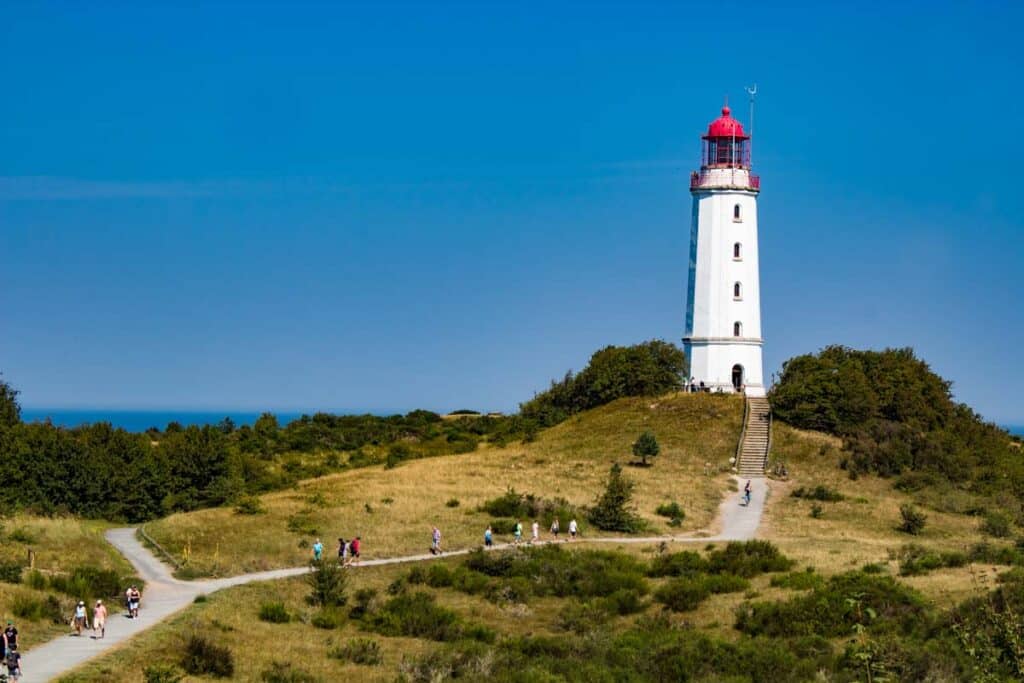
Hiddensee
Rügen is already very relaxing away from the big seaside resorts, but in this respect it cannot compete in any way with the small neighbouring island of Hiddensee. The car-free island is only about 20 km² in size and can be easily reached by ferry from Stralsund and Rügen (Schaprode). If you arrive in the morning, you can easily see everything important on the island in one day. I recommend taking the ferry to Vitte and walking from there to Kloster.
There is a house here that was inhabited by the German writer and Nobel Prize winner for literature Gerhard Hauptmann and today houses a small museum. The village church with its seafaring motifs is also worth seeing. From here you can take a leisurely walk through a forest to the north coast with the island’s landmark, the Dornbusch lighthouse. From here you have a great view of Rügen and the Baltic Sea. Afterwards, you return to the ferry via Kloster and its beach on the west coast.
Practical tips
Which tours are worth a try?
- Sven Vogel, a native of Thuringia, has lived on Rügen for many years and knows the island like the back of his hand. He offers various day tours, including a round trip that covers the most important sights. He is happy to cater to the individual wishes of his guests. Absolutely recommended!
- During the season, Adler Schiffe takes you to the chalk cliffs several times a day from Sassnitz, Binz, Sellin or Göhren. From the water you have the best view of Rügen’s most impressive natural beauty.
- A ride on the Raging Roland train is one of the highlights of a visit to Rügen. Here you can travel across the island in a relaxed way and get on and off in Putbus, Binz, Sellin, Baabe or Göhren.
No products found.
No products found.
No products found.
No products found.
No products found.

